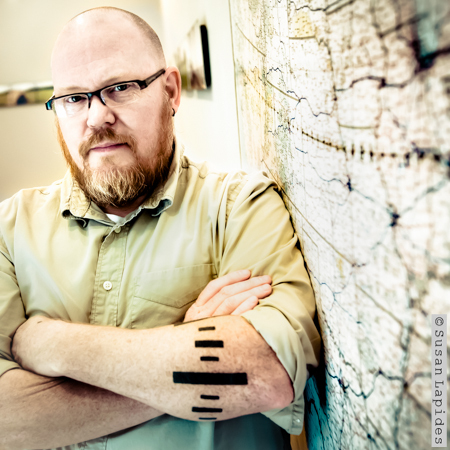photo by susanlapides.com
One of the things I love most about the singular interview is discovering people who dedicate a great deal of their life learning a craft or creating something that feels bigger than all of all. Bruce Myren's photographs spanning the entire 40th parallel of America are the essence of this.
"I'm really concerned with place and how I find myself in the world and by that extension, how other people find themselves in the world. Where are we? And how do we navigate the local space around us?"
A modern day nod to the 1860s and 1870s Clarence King surveys of the West that took place after the Civil War, Myren stopped at longitude marks along the 40th Parallel of the US that captured 52 panoramic landscapes of modern day life. Much like civil war photographer, Timothy O'Sullivan who worked with King capturing the west. All of Myren's work involves a sense of place.
"I actually would like people to stand in their space and consider where they are and really understand their localness," says Myren. "A sense of place empowers you to understand your life better and the world around you. If you care about your local thing, that extends out."
GPS and technology have led us into a world where it is difficult to escape tracking. Myren says this absolute system of location is not natural and does change how we extend ourselves into the world.
"Naturally, humans navigate by relative spatial analysis. They look at their landscape and they find landmarks. It's all very relative and it's all very personal. We've always had maps, but GPS is set on global positions that don't translate into human experience at all."
When he was a young boy, about six or seven years of age, Myren met a new neighbor in Western Mass who led him into the woods and then left him there. "The panic of not knowing where I was in a new environment made me really pay attention to where I was after that. Now when I try to get lost, it's really hard for me because I pay very good attention. I don't always know the direction I'm going, but I know how to get back."
His other works in progress include an exploration of The Washington Elm in Cambridge, MA, where Washington is said to have first taken lead of the American Army and Fort Juniper, an exploration of the forest in Western Massachusetts along The Mill River leading to the small one-person house built in 1940, by poet Robert Francis.
He hopes to have his collection one day in The Library of Congress and the Smithsonian.
This is an exclusive excerpt for Huffingtonpost.com. The full interview is available at TheEditorial.com.

